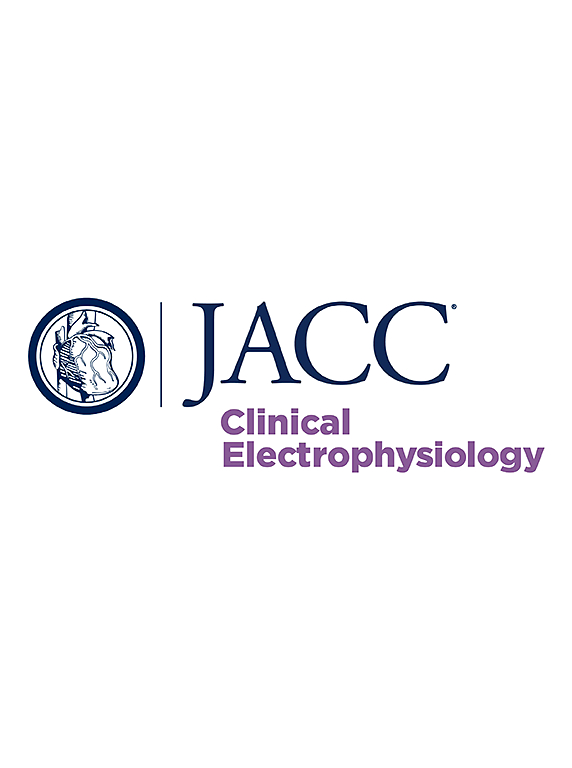室性心动过速的紧急消融术:延长住院时间和死亡率的预测因素。
IF 8
1区 医学
Q1 CARDIAC & CARDIOVASCULAR SYSTEMS
引用次数: 0
摘要
背景:室性心动过速(VT)患者经常出现不稳定 VT,需要进行紧急/高风险消融手术。为了对这些患者进行最佳管理,需要对延长住院时间和死亡率进行临床预测:本研究旨在确定与计划外紧急 VT 消融术中住院时间延长和死亡率相关的因素:方法:连续对 50 例因 VT 急诊住院并伴有结构性心脏病、接受导管消融术的患者进行前瞻性随访,以了解结果和并发症:50 名患者(平均 ± SD 年龄为 67.6 ± 12.8 岁)中,86.0% 为男性,62.0% 患有缺血性心肌病,中位左室射血分数为 28.5%。住院时间为 7 天(中位数为 10 天)或死亡结论:接受急诊 VT 消融术的患者住院时间延长的风险很高,NYHA 功能分级 III 级或以上和之前消融失败的患者都可能出现这种情况。VT早期复发和心衰恶化导致住院时间延长和30天死亡率升高。本文章由计算机程序翻译,如有差异,请以英文原文为准。
Emergent Ablation for Ventricular Tachycardia
Background
Patients with ventricular tachycardia (VT) frequently present in unstable VT and are subject to urgent/high-risk ablation procedures. Clinical predictors of prolonged hospitalization and mortality are needed for optimal management of these patients.
Objectives
This study seeks to identify factors associated with prolonged hospitalization and mortality in emergent unplanned VT ablation procedures.
Methods
Fifty consecutive patients hospitalized emergently for VT with structural heart disease who underwent catheter ablation were prospectively followed up for outcomes and complications.
Results
Of the 50 patients (mean age 67.6 ± 12.8 years), 86.0% were male, 62.0% had ischemic cardiomyopathy, and their median left ventricular ejection fraction was 28.5%. Hospital stay <7 days (median 3 days) occurred in 28 (56.0%) patients (Group 1) and >7 days (median 10 days) or death <7 days occurred in 22 (44.0%) patients (Group 2). PAINESD score and left ventricular ejection fraction were similar between the groups. Compared with Group 1, Group 2 had significantly worse NYHA functional class III or higher (25.0% vs 63.6%; P = 0.006), electrical storm (46.4% vs 77.3%; P = 0.027), and prior failed VT ablation (35.7% vs 68.2%; P = 0.023). Multivariable analysis showed that NYHA functional class III or higher and prior failed VT ablation were predictive of prolonged hospital stay. After ablation, compared with Group 1, Group 2 had worse heart failure (10.7% vs 54.5%; P = 0.001), VT recurrences (3.6% vs 68.2%; P < 0.001), and 7 deaths within 30 days.
Conclusions
Patients undergoing emergent VT ablation are at high risk for prolonged hospital stay, which is predicted by NYHA functional class III or higher and a prior failed ablation. Early VT recurrences and worsening heart failure contribute to prolonged hospitalization and a high 30-day mortality.
求助全文
通过发布文献求助,成功后即可免费获取论文全文。
去求助
来源期刊

JACC. Clinical electrophysiology
CARDIAC & CARDIOVASCULAR SYSTEMS-
CiteScore
10.30
自引率
5.70%
发文量
250
期刊介绍:
JACC: Clinical Electrophysiology is one of a family of specialist journals launched by the renowned Journal of the American College of Cardiology (JACC). It encompasses all aspects of the epidemiology, pathogenesis, diagnosis and treatment of cardiac arrhythmias. Submissions of original research and state-of-the-art reviews from cardiology, cardiovascular surgery, neurology, outcomes research, and related fields are encouraged. Experimental and preclinical work that directly relates to diagnostic or therapeutic interventions are also encouraged. In general, case reports will not be considered for publication.
 求助内容:
求助内容: 应助结果提醒方式:
应助结果提醒方式:


